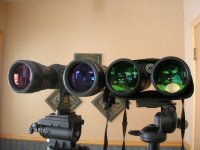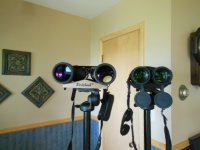albatrosviajero
Well-known member
Hello
I'm looking for a high power binocular observations permanent position, I've noticed the Nikon Monarch 16x56 and 20x56 models, in your opinion which one might be best for this purpose?
Any other suggestions of other models in this price range and quality?
I would use with monopod or tripod.
I have both.
Thank you, Best Regards
Al
I'm looking for a high power binocular observations permanent position, I've noticed the Nikon Monarch 16x56 and 20x56 models, in your opinion which one might be best for this purpose?
Any other suggestions of other models in this price range and quality?
I would use with monopod or tripod.
I have both.
Thank you, Best Regards
Al






